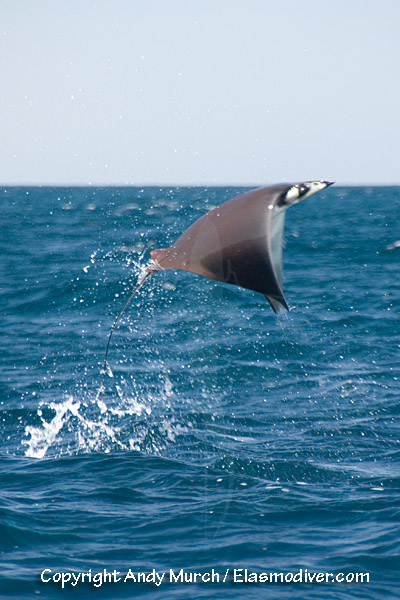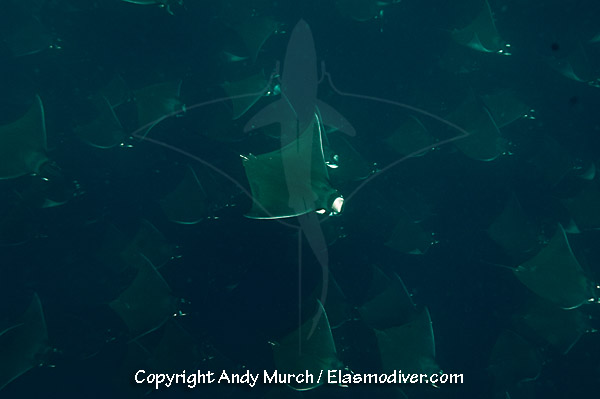|
|
|
SHARK INFO |
|
SHARK |
|
SHARK EVOLUTION |
|
|
|
SHARK DIVING |
|
SHARK DIVING 101 |
|
|
|
CONSERVATION |
|
|
|
PHOTOGRAPHY |
|
SHARK PHOTO TIPS |
|
|
|
RESOURCES |
|
|
|
WEB STUFF |
|
WHAT IS ELASMODIVER? Not just a huge collection of Shark Pictures: Elasmodiver.com contains images of sharks, skates, rays, and a few chimaera's from around the world. Elasmodiver began as a simple web based shark field guide to help divers find the best places to encounter the different species of sharks and rays that live in shallow water but it has slowly evolved into a much larger project containing information on all aspects of shark diving and shark photography. There are now more than 10,000 shark pictures and sections on shark evolution, biology, and conservation. There is a large library of reviewed shark books, a constantly updated shark taxonomy page, a monster list of shark links, and deeper in the site there are numerous articles and stories about shark encounters. Elasmodiver is now so difficult to check for updates, that new information and pictures are listed on an Elasmodiver Updates Page that can be accessed here:
|
|
_ |
MUNK'S DEVIL RAY |
|
View all available Munk's Devil Ray Pictures in the shark picture database Munk's devil ray, Monk's mobula, smoothtail mobula ray, pigmy devil ray, devilfish, manta ray. Latin Name: Mobula munkiana Family: Mobulidae
Other Names:
Identification: Rhomboid disc. Under slung mouth. No tail spines. Dorsum black, purple or purple-grey. Leading edge of pectoral fins fading to blue-grey. Ventrum white. Long caudal filament when intact.
Size: Maximum disc width 220cm.
Habitat: Shallow inshore waters. From surface to sea floor.
Abundance and distribution: Munk's devil rays can be found in the Eastern Pacific region from Baja California to Peru including the Galapagos Islands, Cocos Island and Malpelo.
Diet: The smoothtail mobula feeds mostly of planktonic crustaceans (mysid shrimp) but will also consume very small fishes.
Behaviour: Munks devil rays can be solitary but are more often encountered in immense schools which glide in unison over the seabed in search of food. These rays are famous for their acrobatic breaches in which one or more animals launch themselves into the air and spin or summersault apparently out of control before slapping back onto the surface. Sometimes many animals will jump at once leading to the nickname 'popcorn rays' as they appear to explode randomly in all directions. The reason that these rays breach is unclear. Some scientists have suggested that it is to remove parasites but it appears (from my personal observations) that the rays usually jump in pairs, so it may be some kind of courting behavior.
Reproduction: Ovoviviparous. One pup per litter.
Vulnerability: Munks devil ray is assessed as 'near threatened' by the IUCN due to its episodically high catch rates from gillnet fisheries, restricted range and low reproductive potential. Justification: "The large schools, migratory nature, and demersal feeding of M. munkiana make it highly susceptible to coastal demersal gillnet fisheries throughout its range. Fishery information for this species is limited to the Gulf of California, México, where it is landed in a mixed mobulid fishery south of La Paz, México and in nearshore artisanal elasmobranch fisheries throughout the Gulf of California. A fecundity of one pup per female emphasizes the limited reproductive potential and low productivity of this species. Sporadically high landings (>60 per gillnet) in the northern Gulf of California stress the vulnerability of M. munkiana to bottomset gillnets and the extreme fluctuations in its local abundance. Life history characteristics, limited distribution, and exposure to many fisheries due to its highly migratory nature will likely result in designation of the species as Vulnerable should additional fisheries details become available". (Bizzarro, J.J., Smith, W.D. & Clark, T.B. 2006. Mobula munkiana. In: IUCN 2010. IUCN Red List of Threatened Species. Version 2010.2).
Photographs: Cabo Pulmo, Sea of Cortez, Baja, Mexico.
Similar species: Mobula rays are very difficult to differentiate in the field. Within the Sea of Cortez there are three other recorded mobulids: the bentfin devilray (Mobula thurstoni) which has a concave area on the leading edge of its pectoral fin, the Chilean Devil Ray (Mobula tarapacana) which is a large spineless mobula with strongly swept back curved pectoral fins and an olive/brown dorsum, and the spinetail mobula (Mobula japonica) which has a long caudal filament (tail) with spines and a white tipped dorsal fin.
Reaction to divers: Devil rays do not usually allow divers to get close especially if they are producing noisy scuba bubbles. Patience and some skill at breath holding may produce better results.
Diving logistics: It is possible to encounter enormous schools of Munks devil rays in the shallow bays in Southern Baja. Guides with Pangas are available for hire in Cabo Pulmo where the rays are extremely abundant from late February to early April.
Further reading: http://www.fishbase.org/ http://www.iucnredlist.org/ |























